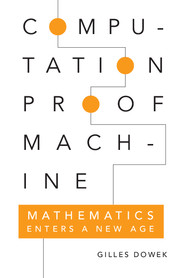Book contents
- Frontmatter
- Dedication
- Contents
- Introduction: In Which Mathematics Sets Out to Conquer New Territories
- PART ONE Ancient Origins
- PART TWO The Age of Reason
- Part Three Crisis of the Axiomatic Method
- 9 Intuitionistic Type Theory
- 10 Automated Theorem Proving
- 11 Proof Checking
- 12 News from the Field
- 13 Instruments
- 14 The End of Axioms?
- Conclusion: As We Near the End of This Mathematical Voyage …
- Biographical Landmarks
- Bibliography
14 - The End of Axioms?
from Part Three - Crisis of the Axiomatic Method
Published online by Cambridge University Press: 05 May 2015
- Frontmatter
- Dedication
- Contents
- Introduction: In Which Mathematics Sets Out to Conquer New Territories
- PART ONE Ancient Origins
- PART TWO The Age of Reason
- Part Three Crisis of the Axiomatic Method
- 9 Intuitionistic Type Theory
- 10 Automated Theorem Proving
- 11 Proof Checking
- 12 News from the Field
- 13 Instruments
- 14 The End of Axioms?
- Conclusion: As We Near the End of This Mathematical Voyage …
- Biographical Landmarks
- Bibliography
Summary
as we have seen, in the seventies, the idea began to germinate that a proof is not built solely with axioms and inference rules, but also with computation rules. This idea flourished simultaneously in several fields of mathematics and computer science – in Martin-Löf's type theory, in the conception of automated theorem proving programs and of proof checking programs, but also in real-world mathematics, especially in the demonstration of the four-color theorem. As is often the case, this idea did not emerge whole, complete, and simple, for it first began to bloom in specific contexts which each influenced it in their own way: the specialists of Martin-Löf's type theory viewed it as an appendix of the theory of definitions; automated theorem proving program designers considered it a tool to make automated theorem proving methods more efficient; proof checking program designers saw it as a means to skip small, simple steps in demonstrations; and mathematicians perceived it as a way of using computers to prove new theorems.
A few years after the emergence of a new idea, it is natural to question its impact and to seek a way of expressing it in the most general framework possible. This is what lead this author, along with Thérèse Hardin and Claude Kirchner, in the late nineties, to reformulate the idea according to which mathematical proofs are not constructed solely with axioms and inference rules but also with computation rules in the broadest possible framework, namely in predicate logic. This drove us to define an extension of predicate logic, called “deduction modulo,” which is similar to predicate logic in every respect but one: in this extension, a proof is built with the three aforementioned ingredients.
Reconsidering this idea in its most basic form and rejecting the sophistication of type theory and automated theorem proving in favor of the simplicity and freshness of predicate logic enabled us to undertake both unification and classification tasks.
- Type
- Chapter
- Information
- Computation, Proof, MachineMathematics Enters a New Age, pp. 134 - 135Publisher: Cambridge University PressPrint publication year: 2015



